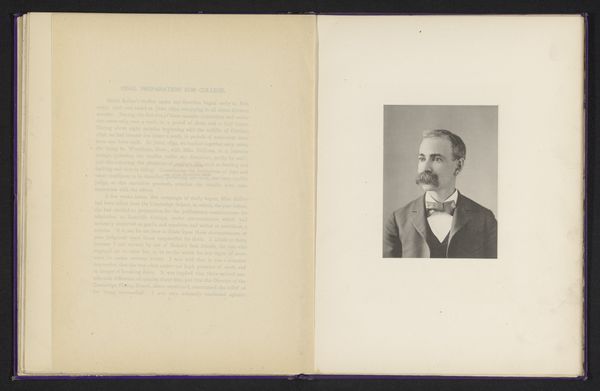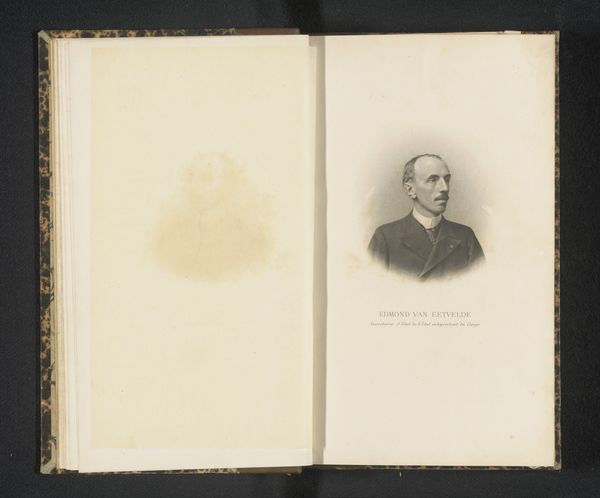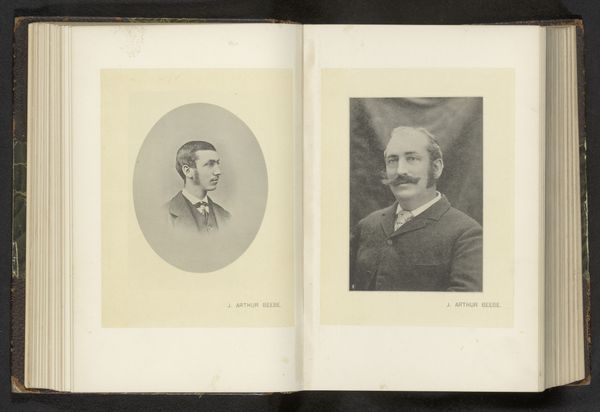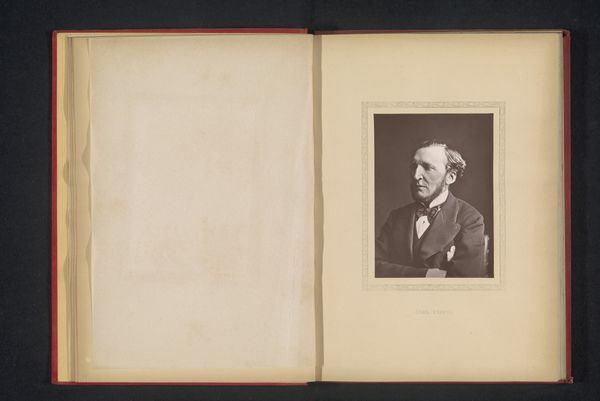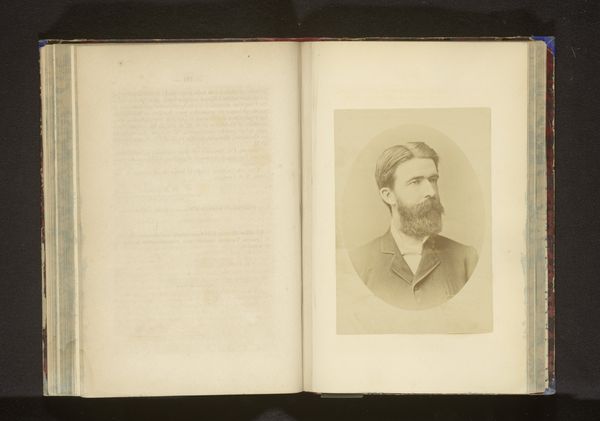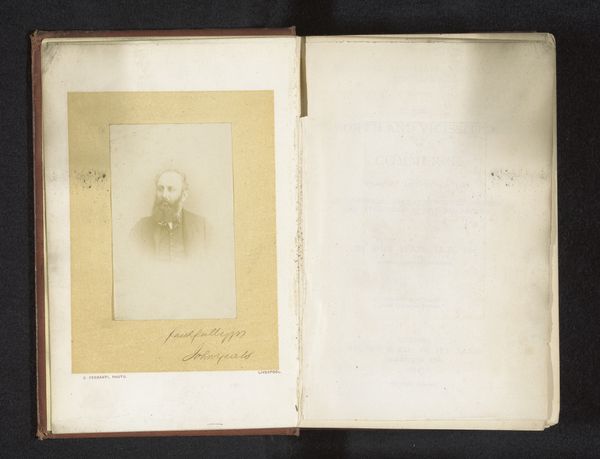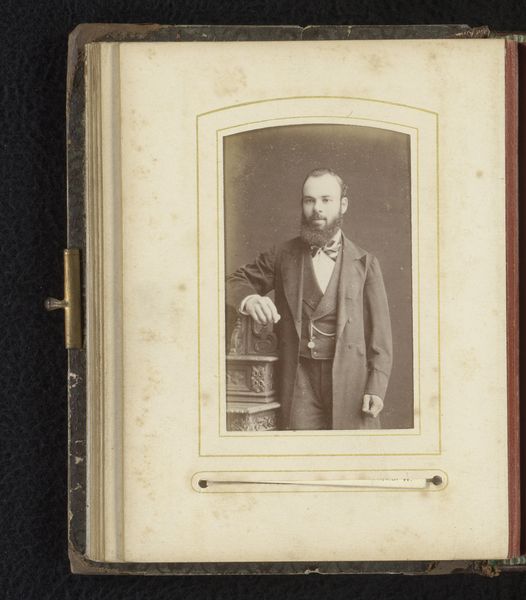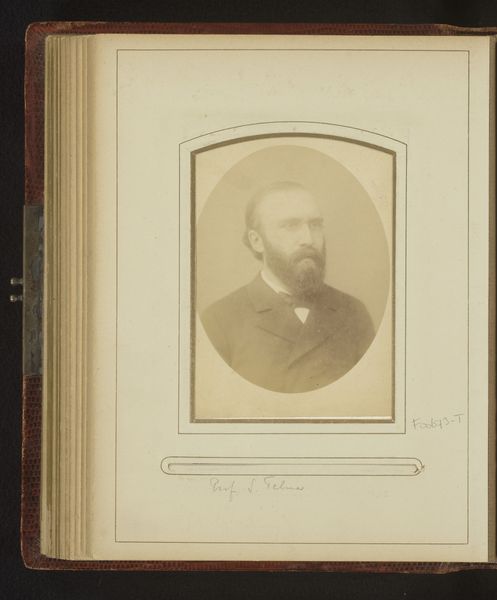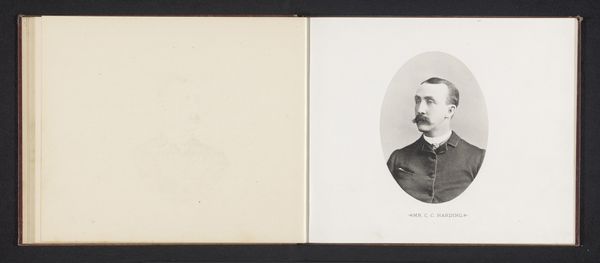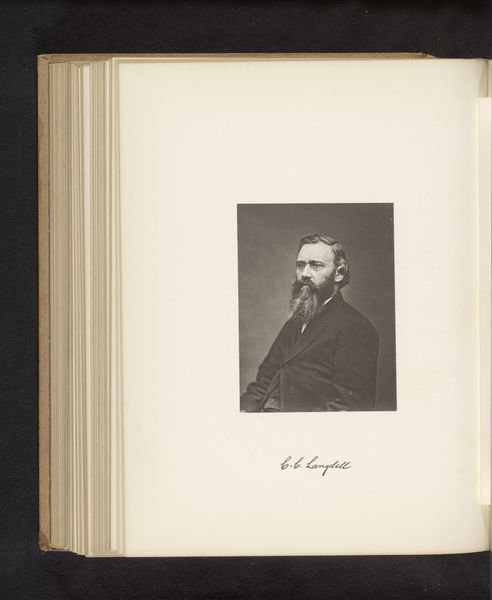
photography
#
portrait
#
photography
Dimensions: height 197 mm, width 150 mm
Copyright: Rijks Museum: Open Domain
Curator: Here we have an intriguing photographic portrait. The metadata informs us this is "Portret van Robert Bulwer-Lytton", dating from before 1891. Note how it’s presented as an image within an open book. What's your first impression? Editor: Austere. Stark, almost. The limited tonal range, combined with the close framing, forces a concentrated attention on the sitter. I am immediately struck by how such photography was crafted and reproduced so precisely with early photographic techniques. Curator: Yes, the composition certainly guides the eye. The gaze of Bulwer-Lytton, slightly off-center, creates a dynamic tension. And that sharply rendered beard almost bisects the picture plane, doesn't it? The soft, diffused lighting further accentuates the depth of his features. I am particularly curious how photographers captured that effect during this era of technological experimentation. Editor: Agreed, I see a carefully staged scene with a refined production chain. It brings to mind not just the individual artist, but also the laborers involved—the chemists preparing the emulsions, the printers, the binders if this were part of a published collection, the implications on photographic media and labor that changed image culture and consumption... it's worth considering the societal ramifications that go beyond pure artistic analysis. Curator: Perhaps, yet I am drawn back to the formal arrangement. See the interplay of light and shadow, the textures rendered with such precision—a subtle narrative emerges about the man himself, an aura of seriousness but tempered with intellectual curiosity. He feels more accessible somehow. Editor: Possibly, but remember photography also opened doors and created a new dynamic that facilitated widespread portraits as a consumer service. This wasn’t just art; this was business, democratizing art and design with the industrial tools now available. Curator: That’s certainly something to reflect upon as we analyze these artifacts, a reminder that aesthetic value doesn’t exist in a vacuum. Editor: Precisely. I’m drawn away now from this, understanding more that photographs help document production means for future audiences as they are collected within media, rather than by those represented within the pictures.
Comments
No comments
Be the first to comment and join the conversation on the ultimate creative platform.
